Voters Favor Ordinance 307 By Slim 55.2%; Initiative Will Cost Homeowners $110 To $1,000 Per Year, Based On Sidewalk Frontage
by Glen Richardson
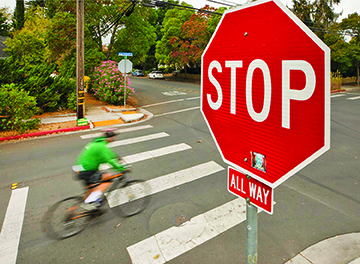
Unstoppable: Colorado’s new “Safety Stop” law allows bicycle riders to treat a Stop Sign as a Yield Sign. The law is creating hostility and resentment among motorists. Photo by John Burgess/The Press Democrat
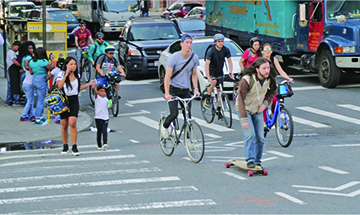
Cyclists Vs. Pedestrians: Bicyclists seek to have walkways and streets designed with both in mind, yet many riders show little concern for pedestrians in crosswalks.
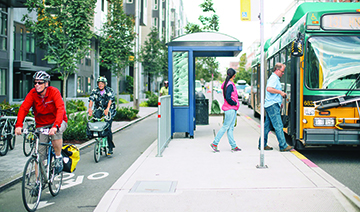
Mobility Muscle: Support for Denver’s Transportation & Mobility Fund by Denver Streets Partnership may result in as much as $9.5 million transferred to sidewalk construction.
Denver’s scrappy band of die-hard cyclists and activists who have proliferated painted bike lanes on Denver streets — and will add another 125 miles by 2024 at a cost of $13.4 million — created and advocated for the new tax that allows the City of Denver to regulate and improve sidewalks. The advocates — known as the Denver Streets Partnership — say the tax, “will give parents, children, people with disabilities, and those that don’t drive, the independence to move about Denver freely and safely rather than walk next to big trucks, navigate cracks, and take detours to find a safe route.”
Costs will be based on how much of the property owner’s land faces a street, and what kind of street is adjacent to the land. Fees will run from $2.15 per linear foot on a residential street to $4.30 per linear foot on downtown streets. Albeit, whatever property owners will be forced to pay, it removes their responsibility for patching-up adjacent property owners’ unrepaired sidewalks and places the responsibility on the City of Denver. The city’s Department of Transportation & Infrastructure is expected to be responsible for implementing the plan.
The annual fee for the owner of a typical 50-foot-wide lot was estimated at about $110 a year by the Streets Partnership and was the number widely quoted during the election. Denver District 2 City Councilman Kevin Flynn, however, told Channel 7 News during the campaign that some of his constituents in Harvey Park, “could pay close to $1,000 a year under 307.” Whatever the figure, owners of larger lots — especially on corners — will have fees significantly higher than $110 a year.
A Fast Fix?
Fees could be deferred until property owners sell, and that would amount to about $40 million a year in new revenue, which the Denver Streets Partnership says can be bonded against to raise $850 million upfront. That would enable Denver to fix or build a “complete sidewalk network” within nine years, the organization claimed during the election.
City officials, nonetheless, conversely contend, “that it will take closer to 30 years and cost billions more,” despite the Streets Partnership’s prophecies.
Moreover, many within the city worry that the government and citizens will push property owners beyond their limit. “If a resident is struggling to afford groceries, why and how can they be expected to spend $100 or more to fix their sidewalks?”
Or Sure Failure?
Denver Streets Partnership — the weight behind the initiative — insinuated during a Sept. 2021 “Sidewalk Palooza” event highlighting the issue, claimed the sidewalks in front of many Denver homes and businesses have turned into tripping hazards that are also barriers or obstructions to wheelchairs and strollers. Likewise, they maintained, “47% of city streets in low-income neighborhoods have substandard or missing sidewalks forcing walkers into the streets, where the risks of a tragic accident increase.”
Opposed to the tax throughout the campaign cycle, Councilman Flynn argues that, “As written the program will fail.” He contends there’s not nearly enough funding or time in the new tax law, and the cost burdens are inequitably spread. Nonetheless, he believes the city will somehow find a way to make the program work.
- Skyler McKinley, AAA Colorado Public Affairs Director, submits that the new sidewalk law has crafted what is apt to become a “10-year question.” Just how the law will be im
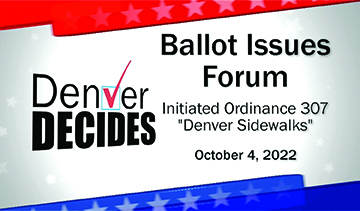
Peloton Push: Cyclists turned politicians found enough air pressure to get Denver voter approval for Ordinance 307, taxing homeowners to fund the patch-up of city sidewalks.
plemented is “a little fuzzy now,” he says. As a result, he suggests, “sidewalks will become an important issue in next year’s race to replace outgoing Mayor Michael Hancock. Candidates will have to become proficient on the issue and campaign on how they will implement the program.”
Condo, Renter Shock
Although condo owners and renters likely weren’t as concerned by the tax campaign as were homeowners, most won’t be absolved from the new tax’s impact now that it has been approved.
HOAs will receive the tax bill, but families that own condominiums will have their share of the fee passed onto them. Remember, the association’s covenants give HOAs the legal powers to place a lien on units or impose fines.
Furthermore, renters are not off the hook either. While the owners of rental properties will be billed for what will potentially be considerably higher fees, they will surely pass the costs on to tenants as they ratchet rent prices up.
Peddle-Pushing Politics
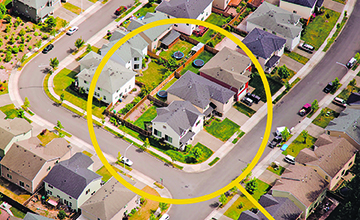
Pricey Place: Owners of larger lots — especially on corners — will pay fees significantly higher than the projected average of $110 a year. Large lot fees could be close to $1,000 per year.
If sidewalks are for pedestrians, why did Denver’s bicycle lobby campaign for the sidewalk tax? Fundamentally, the bicycle-lobby is pushing the city and state to reevaluate street space and design corridors with cyclists and pedestrians predominantly in mind.
Cyclists regard themselves as “vulnerable users,” the same as pedestrians. As they’ve gained political power, they have increasingly pushed the city and state to reevaluate street space. They want walkways and streets designed with cyclists and pedestrians in mind, not motorists. The Streets Partnership, for example, strongly supported Denver’s new Transportation & Mobility Fund. The fund — made possible by an increase in parking meter fees last year (2022) — is expected to transfer about $9.5 million, allowing for a significant increase in sidewalk construction.
At the state level, the biking lobby helped get Colorado’s statewide “Safety Stop” law adopted, allowing bicycle riders to treat a Stop Sign as a Yield Sign and a Red Light as a Stop Sign. Now, anyone age 15 or over who rides a bicycle, eBike, e-scooter, regular scooter, skateboard, or one-wheel on Colorado public roads, has the law on their side when approaching stop signs, red lights, and other forms of traffic. It became law on April 13, 2022. Furthermore, state law now gives cyclists priority when passing turning vehicles. Also, the Highway Code now gives priority to cyclists on roundabouts.
